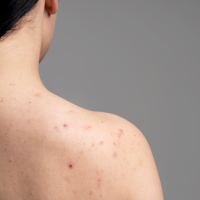
Key messages
- Generally, stronger topical corticosteroids (steroid cream applied to the skin) are probably more effective than weaker preparations. Strong steroid cream applied once daily is probably as good as twice daily, and using steroid cream for two consecutive days weekly probably prevents eczema flare-ups.
- About a third of studies looked for skin thinning, but cases were very low. This made it difficult to judge differences between strategies, although there were more cases with stronger steroid cream.
- We need better-quality research on unwanted effects, over longer timeframes, but intermittent use of steroid cream probably causes fewer unwanted effects.
What is eczema and how is it treated?
Eczema is a common, long-lasting condition that results in inflamed, dry, itchy patches of skin and its severity varies; it is incurable currently, so treatment aims to control symptoms (inflammation and itching). The first choice of treatment is emollients (moisturisers) combined with treatment to reduce inflammation, often steroid cream.
What did we want to find out?
Steroid creams can be used in different ways to treat eczema, and people often feel confused about which ones to use, and how often and how best to use them. We wanted to investigate the effectiveness of different ways (strategies) of using steroid cream and whether they cause unwanted effects.
What did we do?
We summarised evidence from studies that tested different ways of using steroid cream in adults and children. We assessed treatment strategies based on changes in eczema severity assessed by doctors/researchers or participants, and unwanted effects, such as skin thinning (the skin may bruise and tear more easily). We compared and summarised their results, and rated our confidence in the evidence, based on factors such as trial methods and sizes.
What did we find?
Most studies were conducted in high-income countries, likely in hospitals, and were short term (range 1 to 6 weeks); studies that assessed prevention of eczema flares lasted longer, but under 6 months. Participant age varied; 43 studies included children only. Eczema was moderate or severe in 51 studies, mild to moderate in 16 studies, mild to severe in 3 studies, and 34 studies did not report severity. Approximately half of the studies were funded by companies that produced the steroid cream or had links to industry; 44 did not report their funding source.
We included 104 studies with 8443 people.
- Stronger versus weaker steroid cream (63 studies). We combined data from 31 studies and 2018 people. The chances of achieving cleared or marked improvement, assessed by a healthcare practitioner, were probably increased with use of stronger-potency steroid cream. For 1000 people treated, it is likely that 340 to 390 would be clear or almost clear using mild-potency steroid cream; 460 to 520 would be clear or almost clear using moderate-potency steroid cream; and 530 to 710 would be clear or almost clear using potent steroid cream.
- Twice daily versus once daily steroid cream application (25 studies). We combined data from 15 studies with 1821 people. Applying strong steroid cream once daily is probably as effective as twice daily application. Studies did not report unwanted effects well, and we are uncertain about some results. Twenty-two studies (2266 people) reported skin thinning. They identified 26 possible cases, 16 with very strong steroid cream, 6 with strong, 2 with moderate, and 2 with mild steroid cream.
- Longer versus shorter steroid cream duration (0 studies)
- Twice-weekly application (using steroid cream for two consecutive days per week) to prevent flare-ups versus no application (9 studies). We combined data from 7 studies (1149 people). Twice weekly steroid cream probably decreases the chance of eczema flare-ups. For 1000 people using flare-control creams twice weekly, we would expect approximately 248 to have one or more new flare-up compared to 576 people not using this strategy. No cases of skin thinning were identified in 7 flare-up prevention studies (1050 people).
- Other comparisons. We also looked at newer versus older steroid cream preparations, cream versus ointment, steroid cream used with wet wrap, daily versus less frequent application, different strengths of the same steroid cream, time of day applied, steroid cream alternating with topical calcineurin inhibitors (e.g. Protopic and Elidel) versus steroid cream alone, application to wet versus dry skin, and before versus after emollients. No studies compared branded versus generic steroid cream or time between application of emollient and steroid cream.
What are the limitations of the evidence?
Overall, we are moderately confident about the results on the effectiveness of steroid creams to treat eczema, but we have little confidence in results on unwanted effects, because studies were small and did not always use the most reliable methods.
How up to date is this evidence?
The evidence is up to date to January 2021.

